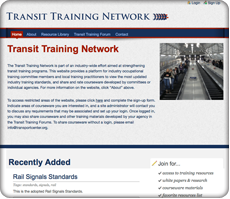News
Staying on Top of New Approaches to Learning and Teaching
Posted May 2021

Technology has given us the ability to choose the ways in which we teach and learn. From traditional classroom-based learning to virtual reality and artificial intelligence, the world of learning has expanded to encompass a variety of methods and applications.
Is one approach better than another? Which approach is most effective?
Those are the wrong questions to ask. It’s not about the approach. It’s about providing learning opportunities for various learners on various topics. The better question would be: how best can learning happen? The answer is really one of approaching learning (and training) from multiple sides. Some concepts are best delivered in person or in one-on-one scenarios such as on-the-job learning (OJL). Some learners do better if they can self-direct their learning as in an interactive online self-study self-paced lesson. Regardless of the approach, it is our strong belief that all learning, whether in-person or online, should be on-the-clock.
The Center’s approach
The Center seeks to balance the best of new technologies and trends in workforce training with the knowledge that in-person instruction has incredible value and will not be replaced anytime soon. The Center’s courseware is mostly geared towards instructor-led training with some content enhanced with video instruction. The Center is now creating resources for self-directed online learning and also offers programs and resources to meet various training needs and fill in common gaps. These include:
Mentor training to complement Registered Apprenticeship Programs
Webinar series designed to help mechanics become familiar with the basics of battery-electric bus (BEB) maintenance
Skills Booster webinar series
Benefits of online learning
While online learning cannot take the place of traditional classroom instruction, it has many benefits and can be used to complement in-person teaching, to strengthen the learner’s understanding of a subject, and to teach material that may be particularly well suited to digital media. With online learning, the learner sets their own pace and can navigate through the material in the sequence that best enables them to grasp concepts and key points. For some material, it may be helpful for the learner to practice an action in a virtual environment before performing it out in the field or on the shop floor. Using interactive online platforms to carry out complex tasks, the learner can correct errors without the risk of safety hazard or damage to equipment. Additionally, online learning can be accessed from any device and location, providing a way to review material out in the field or when a particular task is being performed.
What’s next?
The Center is continuously working to stay abreast of new developments in the world of training and learning as they apply to our work in upskilling the frontline transit workforce. One example is the Center’s new learning management system (LMS) that is being developed to take the place of the current website that houses training materials.
New technologies are always exciting and the Center is committed to examining how they can enhance learning. Rather than embrace every passing trend in instructional design and delivery, the Center’s approach is to assess the effectiveness of new approaches over traditional and time-tested methods and determine if it fills a need for the transit organizations we serve.
Watch this space as we continue to grow and explore!
For more information, please contact Julie Deibel-Pundt .
